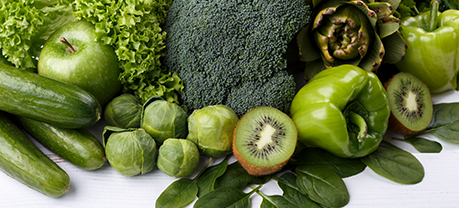There are 9 water-soluble vitamins in our bodies 8 of which are B vitamins and the other vitamin C.
Water-soluble vitamins dissolve easily in water and, in general, are readily excreted from the body to the degree that urinary output is a strong predictor of vitamin consumption.
Unlike the fat-soluble vitamins these vitamins generally not stored in the body. For this reason, you should try to get them regularly from your diet.
Water-soluble vitamins List
Vitamin B constitutes a collection of water-soluble B vitamins including,
B1 Thiamine
Role: Serves as a coenzyme in the body. Keeping the nervous system healthy and it helps break down and convert nutrients into energy and supports sugar.
Food: Fruit, Dried Fruit, Peas, Nuts, Seeds, Hazelnuts, Oats, sunflower seeds, Macadamia nuts, Lentils, Black Beans, Edamame, Asparagus
Illness: Low thiamine intake has been associated with diseases like glaucoma, depression, fibromyalgia, Alzheimer’s disease, Dementia, Chronic Fatigue, Inflammatory bowel
Diseases: Beriberi – caused by a vitamin B-1 deficiency
Wernicke-Korsakoff found in chronic alcoholics
Note: Tea and coffee contain thiaminases – enzymes that destroy thiamine.
B2 Riboflavin
Role: Functions as a coenzyme. Required for conversion of vitamin B6 to its active form, and conversion of tryptophan to vitamin B3 niacin.
keep skin, eyes and the nervous system healthy
Food: Rice, Almonds, Yeast extract, leafy vegetables, broccoli, legumes, mushrooms
Illness: Low B2 migraines, blood pressure
Diseases: ariboflavinosis
B3 Niacin – Nicotinic Acid and Nicotinamide
Role: We can produce ourselves from another nutrient amino acid tryptophan. This is also a coenzyme.
functions in the digestive system, skin and nervous system
Food: Portabella mushrooms, brown rice, peanuts, sunflower seeds, avocados, green peas, sweet potatoes, avocados, Yeast extract
Illnesses: cholesterol, cognition, depression
Diseases: pellagra
B5 Pantothenic Acid
Role: required for the formation of coenzyme A. Maintaining a healthy nervous system, eyes, skin, hair and liver. Red Blood Cells
Food: found in virtually all food – Sunflower seeds, Porridge, Brocolli, brown rice, shiitake Mushrooms, root vegetables and whole grains
B6 Pyridoxine
Role: B6 is required for the synthesis of pyridoxal phosphate a coenzyme.
In the liver, B6 converts into pyridoxal 5-phosphate the active form of the vitamin.
Allow the body to use and store energy from protein and carbohydrates in food and form haemoglobin. Supporting the formation of white blood cells and synthesize neurotransmitters.
Food: vegetables, soya beans, peanuts, potatoes
B7 Biotin, Coenzyme R, & Vitamin H
Role: Nourish their hair, nails and skin, help the body break down fat.
When digested they release a compound called biocytin The enzyme biotinidase then breaks biocytin into amino acids, biotin and lysine.
Food: Walnuts, peanuts, mushrooms, cauliflower
B9: Folic Acid, Folate, folacin, vitamin B9
Role: form healthy red blood cells
Food: broccoli, brussels sprouts, leafy green vegetables such as cabbage and spinach, peas, chickpeas, edamame, peanuts
Diseases: anaemia
B12 Cyanocobalamine
Role: Making red blood cells and keeping the nervous system healthy and using folic acid
Food: yeast extract (such as Marmite as fortified) but no other plantbased way of getting Vitamin B12
Vitamin C
Water-soluble vitamins are carried to the body’s tissues but are not stored in the body but excreted.
Research:
Thiamine:
Thiamine in nutrition therapy
Thiamine deficiency in infants: a case report
Thiamine therapy in Alzheimer’s disease
Vitamin B1 (thiamine) and dementia
Vitamin B1 Thiamine Deficiency (Beriberi)
High-dose thiamine improves the symptoms of fibromyalgia
Thiamine and fatigue in inflammatory bowel diseases: an open-label pilot study.
Thiamine and selected thiamine antivitamins — biological activity and methods of synthesis
Thiamine nutritional status and depressive symptoms are inversely associated among older Chinese adults
Poor thiamin and riboflavin status is common among women of childbearing age in rural and urban Cambodia.
Thiamin deficiency in people with obesity
Prevalence of clinical thiamine deficiency in individuals with medically complicated obesity
Prevalence and predictors of postoperative thiamine deficiency after vertical sleeve gastrectomy
Determining the Role of Thiamine Deficiency in Systolic Heart Failure: A Meta-Analysis and Systematic Review
B2
Effectiveness of high-dose riboflavin in migraine prophylaxis. A randomized controlled trial
A combination of riboflavin, magnesium, and feverfew for migraine prophylaxis: a randomized trial
B5
Pantothenic acid in health and disease
Pantothenic Acid
B7
Biotinidase deficiency: “if you have to have an inherited metabolic disease, this is the one to have”.
Analysis of mutations causing biotinidase deficiency
Vitamins



